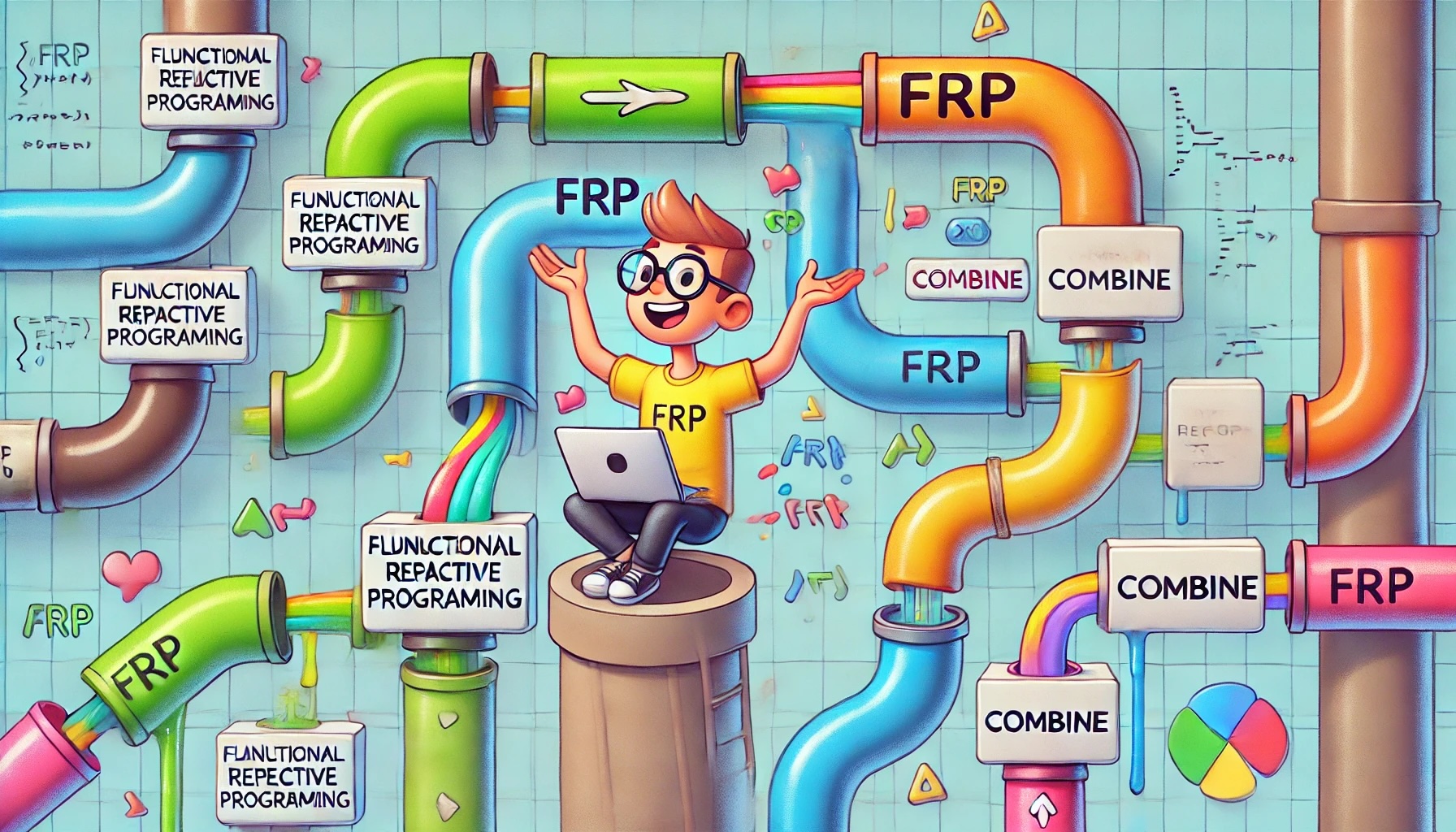Learn how this powerful paradigm simplifies asynchronous tasks, improves code readability, and integrates seamlessly with SwiftUI for modern iOS development.
In the world of iOS development, understanding how to write efficient, clean, and readable code is essential. One paradigm that helps achieve this is Functional Reactive Programming (FRP). Combine, Apple’s native FRP framework, makes it easier to handle asynchronous tasks and work with ever-changing data. This article will break down the core concepts of FRP, explain how Combine leverages this paradigm, and highlight why Combine is a powerful tool in your development toolbox.
What is Functional Reactive Programming (FRP)
Functional Reactive Programming combines two powerful concepts: functional programming and reactive programming.
| Functional Programming |
|---|
| This programming style focuses on writing pure functions- functions that operate only on the inputs they receive and do not affect the external state. By using small, reusable functions, you can create code that is predictable and easier to test |
plaintext[1, 2, 3].map { $0 * 2 }
This line of code uses a higher-order function (map) that takes another function as an argument and applies it to each array element. This approach demonstrates how functional programming focuses on transforming data without changing the outside environment.
| Reactive Programming |
|---|
| In reactive programming, data streams or events occur asynchronously, and you react to them by composing operations to transform and process data as it arrives. |
For example, consider the user’s input in a search bar. With FRP, you could react to changes in the text and filter a list of search results accordingly, all without manually managing updates or UI states.
Combine helps marry these two ideas, allowing you to compose clean, reactive code for handling asynchronous events in iOS apps.
How FRP Works with Combine
Combine is Apple’s native implementation of FRP and it allows developers to handle asynchronous events like network calls, UI updates, and user input. Here’s a breakdown of how it works:
Composable Code
FRP enables you to compose small, reusable pieces of code. In Combine, you can chain functions to handle different operations as events occur. By keeping these functions independent of one another, you improve code clarity and reuse.
For example, consider the following code that chains operators to fetch and process data:
plaintextURLSession.shared.dataTaskPublisher(for: url) .map(\.data) .decode(type: Response.self, decoder: JSONDecoder()) .receive(on: DispatchQueue.main) .sink(receiveCompletion: { completion in print("Completed with: \(completion)") }, receiveValue: { response in print("Received response: \(response)") })
In this example, dataTaskPublisher creates a publisher that emits data from a network request. Using map and decode, we transform the response before reacting to the outcome. These transformations happen asynchronously, showcasing FRP’s ability to handle time-based events.
Pure Functions in FRP
At the heart of functional programming are pure functions, which rely solely on their inputs and return predictable results. In Combine, most operators like map, filter, and flatMap are pure, meaning they make the flow of data predictable and easy to follow.
For example, you can chain operators to transform the data stream in predictable steps:
swiftlet numbers = [1, 2, 3, 4, 5].publisher
numbers
.map { $0 * 2 }
.filter { $0 > 5 }
.sink(receiveValue: { print($0) })
This compositional nature is fundamental to FRP and allows you to break complex problems into small, manageable pieces.
Advantages of Using Combine
Combine offers several advantages over third-party frameworks like RxSwift. While RxSwift implements the cross-platform ReactiveX API and is useful for building reactive applications, Combine is the clear choice when working within Apple’s ecosystem.
Tightly Integrated with Apple Ecosystem
Since Combine is developed by Apple, it’s tightly integrated with Swift and works seamlessly with other Apple frameworks, especially SwiftUI. If you’re developing an app using SwiftUI, Combine is already at the heart of reactive state management. For example, the @Published properties in SwiftUI make use of Combine to automatically trigger view updates.
swiftclass ViewModel: ObservableObject {
@Published var text: String = ""
}
Here, @Published wraps the text property in a publisher, which SwiftUI subscribes to and updates the UI whenever text changes.
No Third-Party Dependencies
Unlike RxSwift, which is a third-party library, Combine is built into Apple’s ecosystem. This means you don’t need to rely on external packages or worry about external maintainers. Combine will evolve with iOS, ensuring that you can trust it to be stable and well-supported for years to come (hopefully).
Performance and Updates
Combine’s close integration with iOS means bug fixes and performance improvements are handled by Apple in system updates. This is a critical advantage over third-party frameworks, where updates may lag behind or eventually stop.
Overcoming the Learning Curve
While FRP and Combine offer immense benefits, they indeed come with a steep learning curve. The abstract nature of functional programming can be challenging at first. However, once you grasp the concepts of composing functions and handling data reactively, the benefits of reduced code complexity and enhanced readability become clear.
Imagine how complex managing multiple callbacks and states can be in traditional programming. Combine abstracts much of this complexity by allowing you to write declarative, composable chains of operations that make your code much more manageable.
Comparing Combine to RxSwift
If you’ve used RXSwift before, you might wonder how it compares to Combine. While RXSwift is built on the ReactiveX API and can be ported to other platforms (most of the time), it’s still a third-party dependency. This comes with its own set of concerns, like relying on maintainers for updates and bug fixes. In contrast, Combine is natively supported by Apple and optimized for the Apple ecosystem, making it a better choice for most iOS and macOS applications, particularly if you’re using SwiftUI.
Here’s a quick comparison:
| RxSwift | Combine |
|---|---|
| Cross-platform ReactiveX API | Native to Apple’s ecosystem |
| Requires external dependencies | Built-in with Swift |
| Maintainers can stop updates | Apple-backed with long-term support |
| Used in existing UIKit projects | Preferred for SwiftUI integrations |
Conclusion
Combine is a powerful tool for handling asynchronous data and reacting to changes in your app’s environment. By leveraging the principles of Functional Reactive Programming, Combine enables developers to write clean, composable, and maintainable code. Its tight integration with Apple’s frameworks makes it the preferred choice for building modern iOS apps.
If you’re just starting with FRP, take the time to understand the core concepts of functional and reactive programming. Once you get the hang of composing small, reusable pieces of code, Combine will drastically simplify your work and enhance the readability of your apps.
Help yourself and even others sharing this post to improve their skills by sharing this article, #HappyTesting 🧪 and #HappyCoding 👨💻.



